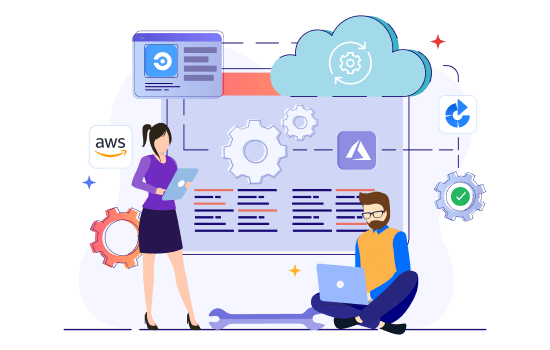 By eliminating the time-consuming coding necessary to testing, codeless platforms have freed developers and testers from this burden. Codeless testing has developed into a fantastic choice to integrate into their testing processes to speed up their test creation and maximize testing reliability. No code automation testing has grown in importance for businesses and offers several advantages. We’ll talk about the advantages of codeless testing for your business in this post.
By eliminating the time-consuming coding necessary to testing, codeless platforms have freed developers and testers from this burden. Codeless testing has developed into a fantastic choice to integrate into their testing processes to speed up their test creation and maximize testing reliability. No code automation testing has grown in importance for businesses and offers several advantages. We’ll talk about the advantages of codeless testing for your business in this post.
What is codeless automation testing?
No-code automation testing enables the development and execution of tests without the need for coding. There is no need to write any code when using no-code platforms. With no-code testing, there is less of a requirement for technically skilled programming resources because non-coders, like business managers or QA teams, may design, carry out, and maintain automated tests.
How is it beneficial for your business?
No code automation tests are quick
A test may be written in an average of 6 hours using code-based technologies like Selenium. Non-technical staff members can quickly develop tests using no-code tools by intuitively dragging and dropping things on a screen or by recording their actions. As a result, businesses can distribute their software more quickly.
Simple enough to understand
Non-technical staff members can more readily interact with their technical colleagues on tests since tests are simple enough for them to write and comprehend. This enables them to find and fix errors quickly, ensuring software of greater quality.
Better use of talent
All employees, even those without programming experience, can make contributions to test automation using no-code platforms. As a result, the testing process can incorporate more pertinent business stakeholders and technical resources are freed up to work on tasks of higher value.
Efficient enough
The test case development is quick and increases the effectiveness of the automation process because it has a slow learning curve and doesn’t require the usage of sophisticated syntax.
Improved adherence to agile methodology
Agile development approaches, which prioritize quick iteration and teamwork, are particularly suited to no-code systems. The most effective no-code test automation solutions are made to support your company’s ability to be as adaptable and fluid as possible in today’s cutthroat business environment.
Saves cost
No-code platforms are more cost-effective than code-based programs because they require fewer programming resources—which are famously expensive—and require less time to build and run tests.
Final Words
Companies may increase stakeholder participation in the testing process, develop their applications, and maintain an edge in a quickly changing digital environment by putting the proper no-code tools and testing methodologies in place. Opkey is a comprehensive testing automation platform that is easy to use for non-technical staff members while being reliable enough to meet the needs of any QA engineer.
Opkey supports over 14 bundled applications, as well as 150 different technologies, allowing you to test even the most intricate end-to-end business processes. Opkey users can quickly become proficient thanks to its simple interface and low learning curve. Opkey is made to manage significant and intricate tasks. They’ve used no-code testing to help some of the biggest businesses in the world, like Pfizer and The GAP, through digital transformation. Opkey is an appealing option for companies wishing to automate their software testing procedures without coding because of these features and capabilities.


















